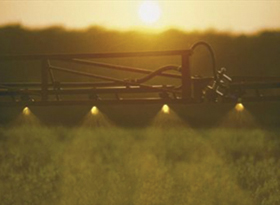 Adaptive management. Fancy title, basically meaning “be on top of developing situations in your fields and be ready for a Plan B”.
Adaptive management. Fancy title, basically meaning “be on top of developing situations in your fields and be ready for a Plan B”.
Many farmers already fit that definition to a TEE. When it comes to growing successful cover crops, however, many have had to up their game.
Cameron Mills, for example, was ready to seed his annual ryegrass cover crop seed in the fall, with a high-clearance sprayer adapted to plant cover crops. The late harvest, complicated by a wet fall, foiled his Plan A. His Plan B was a phone call to a nearby pilot to fly on the annual ryegrass seed.
Mills farms in Walton, IN, and has been a consistent cover cropper since 2005. His experience has put him on the front edge of cover crop field research. For example, he has studied the impact of annual ryegrass on extra nitrogen in the field. Accordingly, he’s reduced his input of N by 30 lb/ac and it hasn’t impacted yield. The following is from an article in Western Farmer Stockman
“In 2012, Mills layered in 170 lbs. of N per acre. Thanks in large part to his healthy no-till/cover-crop soil, he harvested a 165 bushel corn crop despite the severe drought.”
He said he believes he can trim that further, and Dan Towery agrees. Towery, an independent cover crop advisor and immediate past president of SWCS, said (in the same article) that, “after five years of continuous use of cover crops, farmers can typically cut N rates by an average of 50 lbs per acre for the crop year.” The savings will easily cover the cost of cover crop planting, he added.
The experience of others certainly helps those newer to cover cropping, and then having your own experience with cover crops will build confidence towards having your own Adaptive Management Strategy.
As Towery advises with adaptive management, “go slow and pay attention.”





